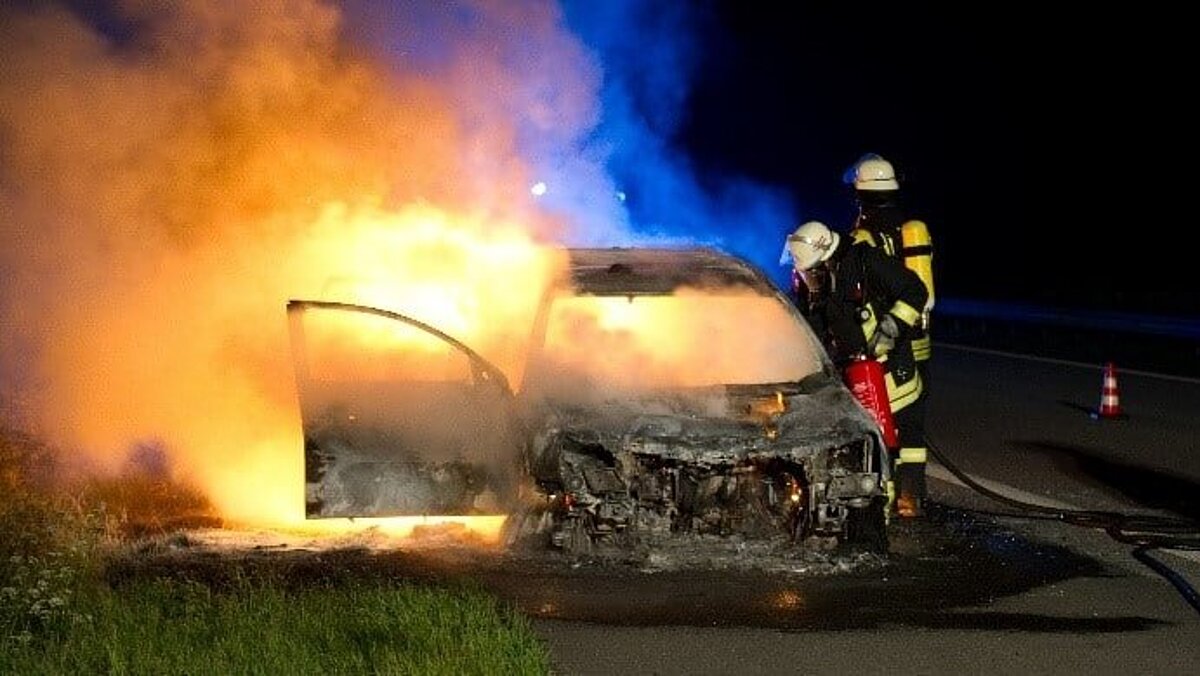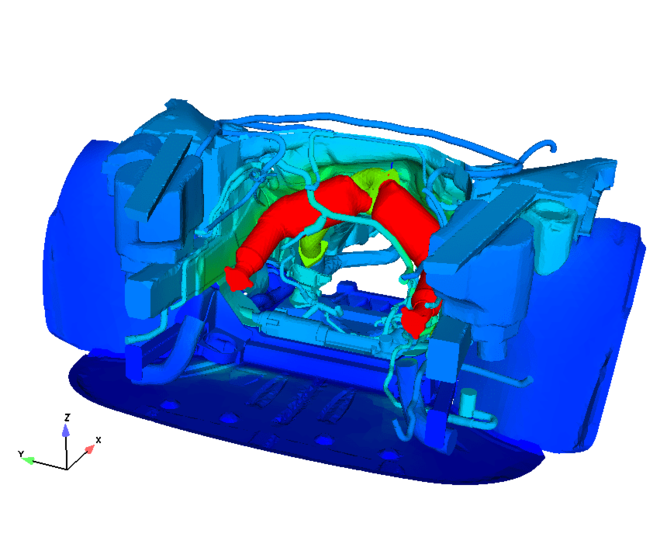Thermal management with CFD - So that exactly this does not happen!

During the development of a sports car, in which we were involved, an even more powerful engine was to be installed.
The problem with the first prototypes was not driving. Here, there is usually enough airstream at higher speeds to supply all the relevant components such as the engine, brakes radiator and, above all, the hot exhaust system with sufficient cooling air.
The problems occurred while drinking coffee at the rest stop. The vehicle was properly parked, but certain plastic parts above the engine began to feel the afterheating of the vehicle, became too hot, dripped onto the engine, ignited and a prototype costing several million went up in smoke.
This was the beginning for us to look specifically at the reheating behavior of vehicles via CFD simulations and to develop suitable and efficient computational methods for this purpose.
In the beginning, the CFD models, which were already complete vehicle models, were relatively simple. The engine was a massive block, which had an initial temperature and cooled down via radiation and free convection. The engine compartment was only shown in a simplified way. Later, more and more details were added, not only the stationary but also the moving vehicle was considered and the models became more and more extensive.
Even if you don't believe it, even a car can run out of air and the individual development departments (for brakes, engine, drivetrain, cooling circuit) fight over what cooling air arrives.
Thermal management is the question of the level of temperature that can occur at different times and environmental conditions on different components and whether it is still permissible.
And it is the question of what can be done when the temperature is too high.
Here, detailed considerations are of only limited help.
Nowadays, the entire vehicle comes into the computer. In addition to flow via CFD, temperatures and heat transfer mechanisms such as radiation, convection and heat conduction must also be taken into account.
The limiting factor for model size is often radiation. However, Moore's Law also strikes mercilessly here and what was unthinkable years ago is already state of the art today.
We use different software pairings for CFD calculation and for temperature calculation. Flow and temperature are solved transiently in co-simulations.
Will these topics become unimportant when we move toward electromobility and fuel cells? On the contrary!
Here, the temperature control of the stacks and the batteries is even more important, temperature differences lead to losses up to overheating, short circuit and fire hazard. And extinguishing a fire under high voltage is anything but fun.
Anyone who has ever peed against an electric pasture fence as a boy knows this from personal experience. Or am I alone in this?
Thermal management with CFD is the supreme discipline.
Work with us here as a very experienced partner. Send us an email and we will be happy to advise you in a personal meeting without obligation.
I am looking forward to meeting you.
Your Stefan Merkle

PS: Power saws, lawn mowers, electric motors and whatever else is in the garage can also get too hot ... even machine tools, tanks and airplanes. But that's another story.

